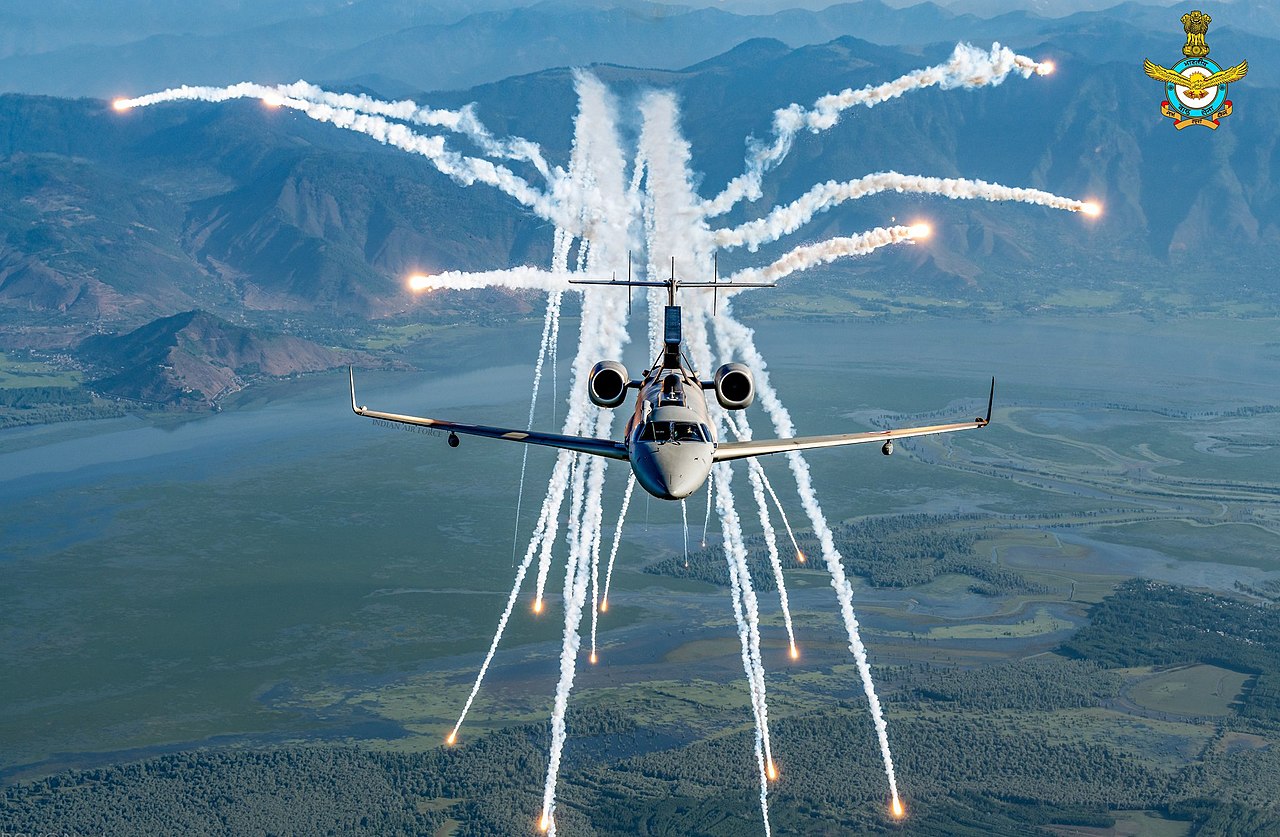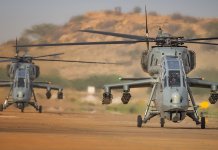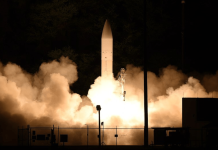Rapidly changing geopolitical and geostrategic environment around the world is leading to conflicts, and terrorism has been a leading cause for some of the most intense and long-lasting conflicts in the world.
India conducted Op Sindoor in response to the attack by Pakistan-supported terrorists in Pahalgam. The war between Ukraine and Russia continues unabated, with increasing use of missiles and drones by both sides. Israel targeted Hamas and Hezbollah in Gaza and Lebanon, and later expanded air strikes in Syria and Yemen, culminating in a 12-day war with Iran.
Analysis of these wars/ conflicts/ operations, since not all of them can be classified as wars, outlines the changing character of war and the importance of technology and innovation.
While there are many takeaways, Intelligence, Air Power, Air Defense (AD), Missile and Drone warfare, supported by operational networks and space-based operations, emerge as the key takeaways for India.
Intelligence
Intelligence is the lynchpin in success or failure of any military operation. In fact, timely and proactive intelligence can often prevent a conflict.
The imminence of a Russian invasion was precisely forecasted through a multitude of intelligence tools, ranging from Space-based ISR to HUMINT and TECHINT.
Israel’s defense forces and Mossad demonstrated complete harmony in intelligence operations prior to kinetic actions.
Similarly, accurate intelligence was imperative to decide the number of GBUs bunker buster bombs to target the nuclear facility at Fordow in Iran. Ukraine successfully executed Op Spider Web against strategic bomber force well inside Russia.
The success of air strikes on terror infrastructure in Operation Sindoor relied on accurate intelligence. The importance of intelligence cannot be overstated, both before and during operations, for accurate targeting.
Various players are involved in the collection and dissemination of intelligence in India, leading to duplication of effort. Additionally, departmental clearances result in further delays.
India needs to streamline every facet of intelligence. In fast-paced, dynamic, and intense operations, fleeting opportunities must be capitalized upon; this necessitates real-time intelligence.
Col. John Warden of the US Air Force (Retired) once remarked, “Key to air power is targeting and key to targeting is intelligence.”
Intelligence effusion will make this happen. Israel could target Iranian missile launchers due to real-time ISR; destruction of launchers rendered hundreds of missiles inconsequential.
Pakistan’s AEW&C could be targeted after landing at Bholari due to its excellent situational awareness at the IACCS and SIGINT capabilities. Intelligence and covert actions have a force multiplier effect, as was witnessed during the 12-day Israel-Iran war, Operation Spider Web, and Operation Sindoor.
Air Power
Recent conflicts like Ukraine-Russia, Israel-Hamas-Hezbollah-Yemen-Iran, and Op Sindoor in the Indian context have reaffirmed the decisive role of air power.
While Russian hesitation in the sustained use of airpower is surprising, all other conflicts have been dominated by airpower.
Israel rapidly achieved air dominance over Iran, which allowed it freedom to strike with precision and systematically neutralise specific targets despite being geographically separated.
USA undertook bombing of Iran’s nuclear sites using B-2s from continental USA. Indian strikes caused 20% degradation to PAF and forced Pakistani capitulation. Air power, because of its inherent characteristics, will remain the instrument of choice in any future operations.
The conflicts also underscored the importance of technological advancement in countering threats in the air domain. Technology and integration into multi-domain operation are critical to achieving desired control of air in a near-peer contest.
The Indian Air Force is presently well below its sanctioned fighter squadron strength. This needs to be rectified, given the dynamic and complex geo-strategic situation in the region and the overt collusion between China and Pakistan.
The proliferation of fifth-generation fighters in the neighbourhood necessitates the procurement of at least three squadrons of fifth-generation fighters for the IAF, while continuing with the AMCA programme in full swing.
Nations are building Anti-Access/Area Denial capabilities. The IAF must possess a long-range precision strike capability to target multiple depths.
Tejas LCAs in large numbers will form the backbone of IAF fighter fleet in the near future. These aircraft must have air-to-air missiles and long-range air-to-ground weapons that out-range our adversaries.
IAF operates platforms from diverse origins which pose challenges in networking. This is a serious drawback in modern air warfare and must be addressed promptly.
Secure communications and the seamless exchange of data between participating platforms are a must for large forces engaged in combat. There is a need to transition gradually from force-on-force engagement to more efficient air combat.
The Tactics and Air Combat Development Establishment could focus on addressing asymmetric threats until our weapons can match or surpass those of our adversaries.
Air power capability can be enhanced by the early integration and operationalization of Manned-Unmanned Teaming (MUM-T) with stealthy UAVs acting as wingmen to 4.5-generation fighters, transitioning to fifth-generation AMCA once operationalized.
This could mitigate the present fighter squadron shortage. The desired degree of control of the air can be achieved with the capability and capacity supported by space, cyber, ISR, and electronic warfare.

Air Defense
There is a noticeable shift in the nature of war in recent conflicts. Non-contact, multidomain, Anti-Access/Area Denial strategies have been adopted, shifting to missile, rocket, drone, and stand-off air-to-ground precision fires.
Adopting sub-conventional tactics in conventional conflict, like drone attacks from within the enemy territory in Russia and Iran, demonstrates close coordination between intelligence agencies and military.
This calls for an integrated approach to Air Defense necessitating strengthening of both active and passive AD. Sheer scale of missiles and drones used in recent conflicts demands upgradation of AD systems to counter these threats.
The good news is that in most cases, AD systems could neutralize more than 80-90% of incoming missiles and drones. India must restructure and rearm its AD to cater to bigger saturation attacks by drones and missiles.
Israeli Iron Dome, David’s Sling, and Arrow systems, supported by US systems, could not stop the entire barrage of drones and missiles from Iran. Despite so many systems, around 20% of Iranian missiles and drones penetrated Israeli AD, causing damage.
The integration of AD systems across all services into a single, multi-layer network is imperative in response to emerging threats.
In the context of Op Sindoor, Lt Gen Rahul Singh, DCOAS, Indian Army, was quoted as saying, “that some indigenous systems performed very well while some did not perform so well.”
S-400 acted as an offensive AD by pushing PAF fighters and AEW&C further deep into their own airspace. Pakistan largely used commercial drones with limited capability during Op Sindoor and only a few surface-to-surface missiles, which failed to overwhelm Indian AD systems.
Both China and Pakistan would have learnt lessons from this conflict.
The counter UAS and AD grid needs to be further strengthened and bolstered with close-in weapon systems to cater to diversely guided UAVs from low-level to high altitudes.
The integration of powerful DEW systems would provide unlimited firing capability against UAV attacks. Additionally, operations have highlighted the need to review the number of SAMs each service provides for operations. Large numbers would be needed to counter aircraft, missile, cruise missile, and drone threats.
Operation Spider Web and Op Rising Lion highlighted the effectiveness of drone strikes against targets that are usually not well-defended. Passive air defense in the form of asset protection by hardening aircraft shelters and hangars is now inescapable.
Few Indian companies have developed materials which can enhance the safety of assets parked under soft shelters. Advances in drone warfare and their lethality necessitate strengthening of infrastructure to safeguard precious air assets.
Space Operations
Present-day operational networks do not rely on a single domain. The communications which were traditionally supported by satellites in geosynchronous orbits now use Low Earth Orbit satellites to mitigate jamming threats.
As nations develop hypersonic weapons, their detection, identification, and tracking will depend heavily on space-based surveillance. Long-range air-to-air missiles will push the AWACS further into its airspace, thereby negating its raison d’être.
The battlefields will become more complex, congested, and contested with drones, missiles, stealth aircraft, and hypersonic weapons. Establishing surveillance capabilities in space will mitigate the limitations of terrestrial and airborne radar systems.
As more stealth aircraft, both fifth- and sixth-generation, proliferate, the chances of detection would vastly improve with space-based surveillance platforms.
USA, Russia, and Israel have copiously used space-based assets for both offensive and defensive operations. The Israeli satellite network captured more than 12,000 images of Iran before and during Operation Rising Lion. Starlink brought huge capability to the Ukrainian forces operating in a GPS-denied environment.
The plan to launch 52 satellites under the space-based surveillance-3 programme will only partially address the requirements for the future.
There is a need to consolidate all space capabilities under one agency by upgrading the Defense Space Agency to a full-fledged tri-service Space Command. Incorporation of AI tools in this domain is imperative.
The outcomes would include real-time ISR, counter-stealth, counter-hypersonic capabilities, cooperative targeting by fighter aircraft, secure communications, counter-space operations, and data sharing to enable Joint All-Domain Integrated Operations.
Conclusion
Recent conflicts are a window into the future of warfare. The use or lack of use of air power, as well as the strength of air defense, have been key factors in controlling outcomes.
Hesitation in using air power delays accomplishment of military and political objectives, as is evident in the Russia-Ukraine conflict.
Strong AD is crucial in preserving assets and maintaining the morale of the population, as demonstrated in the 12-day Israel-Iran war, where Iranian air assets were destroyed by IDF; however, no major operational losses were suffered by the Israeli Air Force.
The surprise achieved by Israel at the commencement of operations and by Ukraine in Operation Spider Web was a masterclass in concealing capabilities and timing.
The use of intelligence, air power, and space-based assets enables a nation to achieve strategic surprise and wrest initiative. These components also ensure control of the escalatory ladder, as the nation with better intelligence, air power, and space capabilities can forecast the adversary’s likely response.
Operation Sindoor had numerous positives for India; however, India must be prepared for a higher intensity of operations in any future conflict, especially with China, which will likely attempt to overwhelm India with both quantity and quality.
Gen Anil Chauhan, CDS, during his address at a seminar on July 16, 2025, said, “Today’s wars must be fought with tomorrow’s technology.” This would necessitate large investments in capabilities, especially air power, air defense, and space, even if it comes at the cost of something else in the defense budget.
- Air Marshal (R) RGK Kapoor, PVSM, AVSM, VM, is a retired officer of the Indian Air Force. He served as the Air Officer Commanding-in-Chief (AOC-in-C) of Central Air Command.
- Mail EurAsian Times at editor (at) eurasiantimes.com




